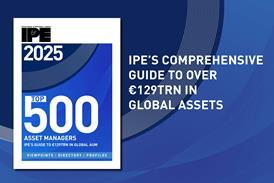The scenario prevailing in financial markets calls for economic growth on its long-term trend. The Asian crisis does not seem to have impaired significantly the expected profitability of listed companies, which should mostly remain above trend. Inflation should stay low, thus helping monetary policies to remain on the easy side. Public deficits are under control, and primary fiscal surpluses are now expected for many countries. Most strikingly a fiscal surplus is expected in the US for 1998. The risk to this scenario would be, in our view, rather on the side of lower activity, possibly as a result of a sharp deceleration of international trade, not wholly compensated for by higher domestic activity in the OECD countries. Lower inflation rates should follow. Indeed, this alternative scenario would obviously be more bullish for bonds. However, we currently assign it a low probability of realisation. We favour equities over bonds, with a preference for European assets globally, and a long-term overweight in Japanese and emerging market equities.
Observed risk premiums are consistent with the above consensus about the fundamentals". As a whole, equities and bonds in industrialised countries seem therefore fairly priced. Our allocation of stocks versus bonds would be close to the relevant benchmark, with however some preference for equities, given the recent rally in the major bond markets.
Within a bond portfolio we prefer Europe to the US or Japan. Unless monetary policy is eased, which seems unlikely in the short term, bond markets in the US appear somewhat overvalued. More strikingly, the Japanese bond market's pricing of economic activity is probably too pessimistic: nominal and real bonds yields have reached historic lows, while economic activity should resume an upwards trend some time this year, as the Japanese authorities eventually switch to a more expansionary fiscal policy.
As for European bond markets, the term spread (long-short yields) is profitable, while the risk of bond yields going up significantly is low. Inflation remains subdued, unemployment is high, and there is a very low likelihood of an increase in short-term rates. The euro convergence process is finished for most countries assumed to compose the future Euro zone (probably 11 of them). However, there are still some opportunities: Spain and Portugal at the long end of the yield curve (10-year bond yields are still significantly higher than German bond yields, while the long-short spread is positive); Italy and Ireland at the short end of the yield curve, where the observed short rates should fall.
Stock markets have experienced high volatility in recent months following the Asian crisis, increasing risk premiums worldwide. While negotiations between the IMF and the main actors of the crisis advanced and earnings' visibility improved, US and European markets have more than recovered the ground lost since last October. On a long-term basis, observed risk premiums in Asia taken as a whole are extremely high when compared with those of the rest of the world: as long as the restructuring of financial and corporate sectors becomes a reality, big gains are to be realised in these markets, including Japan. In the shorter term however one has to bear in mind high levels of volatility. Within Europe, we overweight those countries that lagged somewhat in 1997 : Austria, Belgium, and Sweden, while we underweight Switzerland, Spain and Germany. In America, we prefer Canada to the US.
Maria Laura Hartpence and Patrice Conxicoeur are with Sinopia Asset Management in Paris"














No comments yet